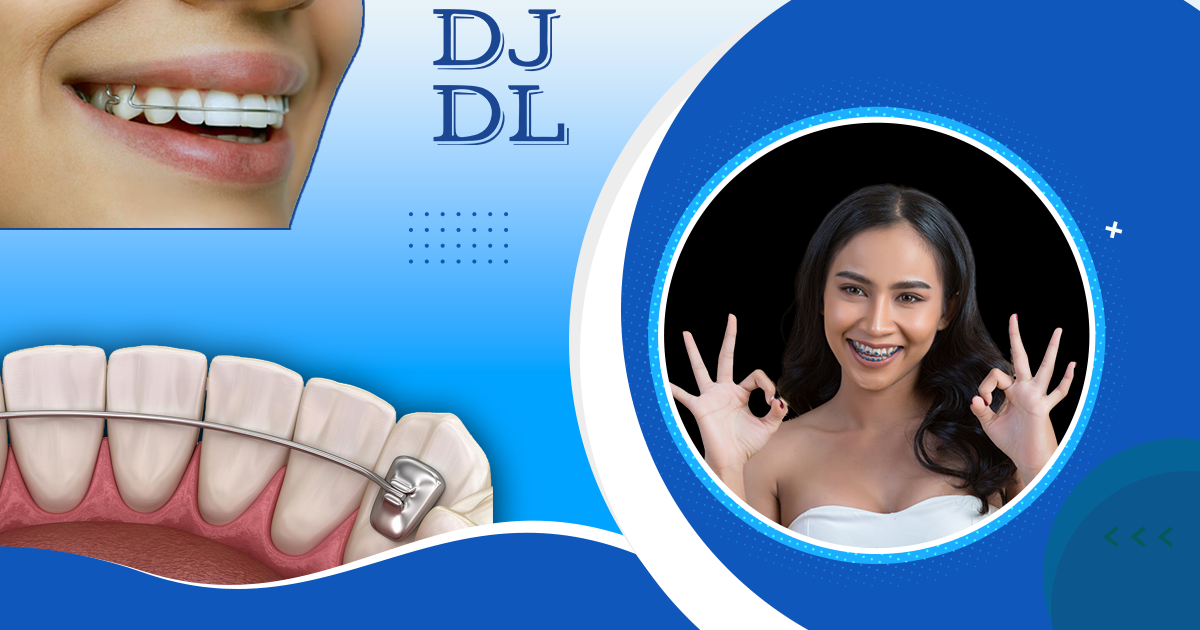
Caring for Retainers: Essential Tips and Techniques
Retainers are essential orthodontic devices to prevent teeth from shifting back to their original positions after orthodontic treatment. They hold teeth in their new positions, preventing them from relapsing or moving out of their corrected positions due to natural forces like genetics and age. There are different types of retainers:
- Hawley Retainers: These retainers consist of a plastic or acrylic base that sits on the roof of the mouth (for the upper arch) or along the tongue side of the lower teeth. They have wires that wrap around the front teeth to maintain their position.
- Essix retainers: Essix retainers are a type of clear retainer. They are often made of transparent plastic and fit snugly over the teeth. Essix retainers are less visible than Hawley retainers and are sometimes preferred for their aesthetic appeal.
- Fixed or Bonded Retainers: These are thin wires that are bonded to the back of the teeth. They are not removable and provide a continuous force to keep the teeth in place. Fixed retainers are often used on the lower front teeth.
Essential tips and techniques for caring for retainers
Taking care of retainers is crucial to maintaining good oral hygiene and ensuring the effectiveness of orthodontic treatment. Follow the orthodontist’s instructions regarding retainer wear, cleaning, and maintenance to ensure the long-lasting achievements of your orthodontic treatment. Here are some essential tips and techniques to help you take proper care of your retainers:
- Cleanliness: Clean your retainers daily to prevent the buildup of plaque and bacteria. Use a soft toothbrush and non-abrasive toothpaste to gently brush the retainer’s surfaces. Soak your retainers in a retainer cleaning solution or a mixture of equal parts water and white vinegar for about 15-20 minutes at least once a week to help eliminate bacteria and odors. Do not use hot water, as it can deform the retainer. Stick to lukewarm water for cleaning.
- Handle with care: Always take your retainers out before eating to avoid damage. This also helps prevent food particles from getting trapped in the retainer. When putting on or taking off your retainers, handle them gently to avoid bending or damaging the wires.
- Storage: When not in your mouth, store your retainers in a protective case to prevent loss, damage, or exposure to bacteria. Avoid wrapping your retainers in tissues or napkins, as this can lead to accidental disposal.
- Regular check-ups: Attend regular orthodontic check-ups to ensure that your retainers are fitting properly and effectively maintaining the alignment of your teeth. Retainers can wear out over time. If you notice any signs of damage or wear, consult your orthodontist for a replacement.
- Keep them away from pets: Pets are often attracted to the smell of retainers, so keep them out of reach to prevent them from becoming chew toys for your furry friends.
- Avoid harsh chemicals: Avoid Mouthwash and Bleach: Harsh chemicals, such as mouthwash and bleach, can damage the materials of your retainers. Stick to mild cleaning solutions recommended by your orthodontist.
- Stay consistent: If your orthodontist has specified a schedule for wearing your retainers, follow it diligently to maintain the results achieved through your orthodontic treatment.
Post-Braces Retainers Insights
After completing orthodontic treatment with braces, the use of retainers is crucial to maintaining the achieved results and preventing teeth from shifting back to their original positions. A retainer after braces can help ensure the success of your orthodontic treatment and help you enjoy a stable, well-aligned smile in the years to come. Here are some insights and tips related to post-braces retainers:
- Consistency is key: Follow your orthodontist’s instructions regarding the wearing schedule for your retainers. Initially, you may be required to wear them full-time, and later they may transition to nighttime wear.
- Regular orthodontic check-ups: Attend scheduled follow-up appointments with your orthodontist. They will monitor your progress and make any necessary adjustments to ensure the retainers are working effectively.
- Replacement when necessary: Keep an eye on the condition of your retainers. If you notice any signs of wear, damage, or if they become loose, consult your orthodontist for evaluation and possible replacement.
- Transition to nighttime wear: As your orthodontist advises, you may transition from full-time wear to nighttime wear. It’s important to follow this transition plan to maintain the stability of your tooth alignment.
- Maintain good oral hygiene: Continue with regular dental check-ups and cleanings to ensure overall oral health.
- Flossing and Brushing: Practice good oral hygiene by flossing and brushing your teeth regularly, and clean your retainers as part of your daily routine.
- Communication with the orthodontist: If you experience any issues with your retainers or have concerns about your tooth alignment, don’t hesitate to contact your orthodontist for guidance.
- Lifelong commitment: Consider retainers as a long-term commitment. Even after the initial phase of full-time wear, continue wearing them as recommended by your orthodontist to maintain the results.

